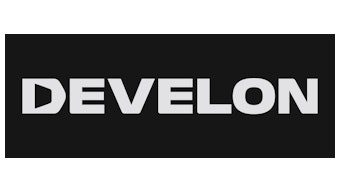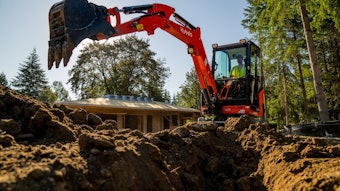
When it comes to installing water features, the process is much easier if hardscape contractors have already established a clear flow of procedures.
Evan Hill, owner at Earth Works Outdoor Builders in South Lyon, Mich., discusses the process his company follows and offers advice for other hardscape contractors interested in offering water feature installations.
1. The customer inquiry
Earth Works Outdoor Builders accepts project inquiries in three ways: through email, through a consultation form on its website and via direct phone call.
“When I talk to the customer, I just get them talking about their idea and their plan,” Hill says. “Most of the time, they’re really excited about the project, and they’ve been thinking about it for a long time. It’s a lot different than just going in and laying mulch or mowing lawns.”
2. The consultation
From there, Earth Works Outdoor Builders sets up a consultation meeting, charging a $150 consultation fee for consultants to meet with the customer for an hour, walk the landscape and talk about the vision.
Additionally, Hill says Earth Works always asks for photos of the proposed installation or rebuild area in advance.
“A lot of times, customers will also present pictures they have from Instagram or Google or something they saw in real life on a trip or something like that,” Hill says. “I may come back to them and say this type of water feature will look too tall or out of place and offer them other options.”
In order to determine the best type of water feature and location of that feature, Hill says there are several items that must be considered.
First and foremost is budget.
“I’m always discussing budgets, and if they have a budget range, I can offer up a few options,” Hill says. “If it’s a case where they really want a specific function, I advise them to wait until they’re ready (if it's not in their budget). Sometimes customers will wait for a year and then hire me back when they have more money.”
Other considerations include the crew’s ability to access the proposed location for the water feature, whether fish will be included, auditory features, whether the customer wants a pond and/or decorative features, visibility from inside the house, rock style and so on.
“There are a lot of cases where we’re installing features completely different from what a customer initially wanted, based on those questions I ask,” Hill says. “For example, the ability to get material in and out of a location with machines reduces manpower, so if you have limited access with machines, that’s going to drive the price up in labor, affecting the total cost and the customer’s budget.”
After Hill offers the proposal and the client accepts, the $150 consultation fee is applied as a credit toward their project’s total costs, and the company asks for a 50 percent deposit to schedule the job.
Typically, Hill says, the job will start a month and a half to two months after the consultation.
3. The installation
Once the job is scheduled, Hill says the installation can take anywhere from one to two weeks to a month for larger projects.
The company uses a John Deere 2038 utility tractor with a backhoe attached to it and makes use of water feature materials from Blue Thumb.
“The backhoe is how we’re excavating all of our holes for ponds and water features, so that does the digging and the trenching, and then on the front of the tractor, we use a combination of attachments depending on the water feature and its location,” Hill says. “We can carry boulders and soil with them. Once everyone understands how to use the tools and how to rig boulders properly, it’s much safer and protects everyone from getting hurt.”
At this point in his career, Hill says he spends some time with crews on the jobsite, taking the time to show them how to do the installation with hands-on demonstrations.
“The training process can add a week, but we’ll tell customers that we have new crew members training and that I’ll be building the pond with them,” Hill says. “That way, they’re more aware of how much more time it can take, usually twice as much time as normal.”
For contractors thinking about getting into the water feature segment, Hill recommends they practice an installation at their own house or a family member’s house.
“Have a space where you can put in a water feature, and don’t charge for the labor,” Hill says. “That way, you can get experience in real life for how the process works, what you can learn from it and what you can improve upon. The only way to gain that experience is to get that water feature put in the ground.”
4. The customer education
Before crews leave the site, it’s important to educate the customer on the care and maintenance of their water feature.
“Sometimes we install a fountain, and the customer calls a week later to say it’s leaking. However, it’s not leaking—it’s really evaporation,” Hill says. “The amount of water loss is not something customers are thinking about in advance.”
In turn, Earth Works is constantly educating customers on where the water levels should be, when they should fill up the water feature, etc.
“You always want to build your reservoir bigger than you think so it can hold as much water as possible based on the environment, and the customer is not needing to refill it frequently,” Hill says.
Hill also mentioned that there will likely be an algae bloom with every new water feature, whether it’s a pondless waterfall or koi pond or fountain.
“At some point, that brand new-water feature’s ecosystem is going to have to balance, and so a few months after the feature is put in, there will be an algae bloom and it’s going to look green,” Hill says.
When that does occur, the company can provide a maintenance cleaning service where crews drain it, power wash it clean, clean the filter media and get it running again.
“Once that initial algae bloom is done, nature has typically taken its course,” Hill says.
























